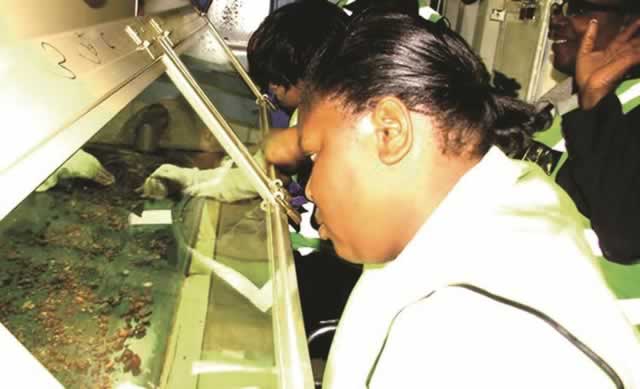Minerals beneficiation key to Zim’s prosperity

Garikai Chengu
ZIMBABWE is host to the largest diamond fields in the world and only recently the nation discovered another huge diamond field the size of Swaziland. Experts predict that within five years Zimbabwe will become the largest diamond producer in the world. If Zimbabwe focuses on beneficiating its diamonds by processing them from rough stones to glittering finished products, the country has the potential to become the diamond capital of the world.
The global value chain of the diamond industry includes exploration, mining, sorting, polishing, dealing, jewellery manufacturing, and ultimately retail. Zimbabwe is able to conduct the first three stages but must now focus on mastering the other four. In a nutshell, this mastery is beneficiation.
Beneficiation is crucial because Africa produces 65 percent of the world’s diamonds and yet it only profits from 15 percent of the $90 billion global diamond industry. If Zimbabwe was able to cut and polish its own diamonds before exporting them it would create an additional $8 billion in revenue and 200,000 jobs, according to the Centre for Natural Resource Governance. As it stands, Zimbabwe is literally exporting jobs through the export of unprocessed diamonds. In fact, India reported that the import of Zimbabwe’s unprocessed diamonds has created 60,000 diamond cutting jobs in India.
The best way for Zimbabwe to benefit from its diamonds is for government to form a State Diamond Trading Company (SDTC). The State owned company’s primary objective should be to buy rough diamonds from miners, to sell to local cutters and polishers, in order to boost the downstream industries. This would create jobs, add value to diamonds and boost revenues for government coffers when they are exported at higher prices.
The State should therefore make it exceedingly difficult for Zimbabwe’s uncut stones to be shipped elsewhere by levying a significant export duty on exports of unfinished diamonds. The SDTC is to operate on a cost-recovery basis, passing profit margins onto its local clients. Craftspeople and local firms have to buy, cut and polish the rough stones, and then sell them at market prices. The SDTC must also provide funding to assist with start-up capital for these indigenous small-scale beneficiators.
In fact, according to the South African Government, in the four years that the South African State Diamond Trader has been in operation, it has been a boon for the local downstream diamond sector. It has reportedly created thousands of jobs, added millions of dollars to the value of diamonds and thereby boosted government revenues.
Admittedly, there is not as yet a sufficiently large number of people with the requisite skills in Zimbabwe to realise such beneficiation plans. Therefore, the SDTC should provide for an Indigenous Diamond Beneficiation Fund designed to provide young Zimbabweans with access to intensive training in diamond polishing and cutting abroad. Given the current lack of local cutting schools and traditions, this initiative will bring service and design knowledge back to Zimbabwe, so that the quality of cut diamonds is up to international industry standards.
Locally, however, for beneficiation to truly empower the majority, thousands of skilled Zimbabweans will be needed to process the gems. Therefore, government must make a firm commitment to creating local schools and institutions to provide the workforce with the necessary skills. One such encouraging commitment made by government is the multimillion-dollar Diamond Technology Centre that will have the positive effect of centralising control over diamonds. This centre will serve the important fiscal control functions of enhancing accountability, minimising leakages and enabling government to value and tax mined diamonds more accurately.
President Mugabe has shown leadership and foresight on the issue and recently stated that, “local beneficiation of diamonds in Zimbabwe shall be encouraged through mechanisms that will require producers to set aside some 10 percent of their diamond production for local cutting and polishing, as well as jewellery manufacturing.” However, government must ensure that this percentage is flexible and, as Zimbabwe’s diamond processing capabilities improve, the percentage should be raised until all rough diamonds are processed within the nation’s borders.
Beneficiation will eventually serve as a catalyst for other industries directly or indirectly related to diamonds like banking, jewellery making, security, information technology, and even tourism.
For Zimbabweans to fully benefit from the mining, beneficiation and trading of their gems, they must know the value, extent and location of their stones. This can be ensured by the formation of the recently proposed State Diamond Exploration Company. The State Diamond Exploration Company’s mandate will be to provide sound mineral resource information to attract and incentivise both local and foreign investors.
There are four stages of independence for African nations: Political, territorial, economic and prosperity. Zimbabwe has attained the first three and diamond beneficiation will go a long way to attaining the final stage. By forming a democracy and gaining independence from white minority rule in 1980, Zimbabwe has clearly attained political independence. The land democratisation programme has allowed the majority to regain control of the nation’s land and territorial independence. The ongoing indigenisation programme is seeing to it that the economy is put back in the hands of the majority. Finally, mineral beneficiation will form the much needed bridge for Zimbabwe to eventually become a first world power.
Garikai Chengu can be contacted at [email protected]












Comments